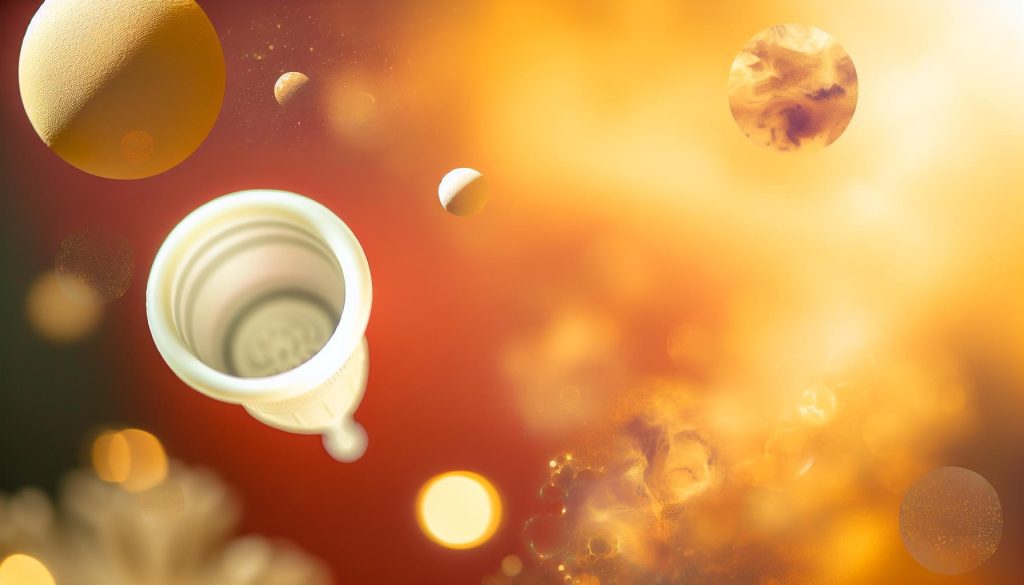Navigating postpartum recovery can be overwhelming, especially when considering menstrual hygiene options. As many new parents discover, returning too regular cycles may prompt the question of whether a menstrual cup is suitable for their evolving bodies. Understanding the factors that influence comfort and fit is essential for a positive experience during this transitional phase.
Understanding Postpartum Changes: How Your Body Adjusts After Birth
Adjusting to Life After Birth
After bringing a new life into the world, your body undergoes a myriad of changes that can affect various aspects of your health and hygiene, including your menstrual cycle. One of the most critically important adjustments is the transition from pregnancy to postpartum recovery, which can influence when and how you use menstrual products. Awareness of these changes is vital to make informed choices, especially when considering items like menstrual cups.
Physical Changes and Recovery
In the postpartum period,your body will experience numerous physiological changes. These can include alterations in the uterine size, hormonal fluctuations, and even variations in menstrual fluid dynamics. Typically, the uterus shrinks back to its pre-pregnancy size, a process that takes about six weeks. During this time, many women experience lochia, a discharge that can last several weeks, which differs significantly from a regular menstrual cycle. This understanding is crucial: using a menstrual cup may not be advisable until lochia has fully cleared, as introducing internal menstrual products can increase the risk of infection, altering your postpartum recovery experience [3[3].
Timing Your Return to Menstrual Cups
Once you have fully transitioned out of the postpartum bleeding phase,you may wonder when it’s safe to reintegrate a menstrual cup into your routine. Experts recommend waiting until your first full menstrual cycle returns, which can vary greatly from one individual to another. For some, this may take a few weeks, while for others, it might be several months [1[1].
To help you understand the various factors that may affect your decision to use a menstrual cup postpartum, consider the following points:
| Consideration | details |
|---|---|
| Lochia Duration | Typically lasts 4 to 6 weeks; your menstrual cup should not be used during this time. |
| First Period | Can return as soon as 4 to 8 weeks after birth; wait for at least one full cycle before using a cup. |
| Symptoms | Be mindful of any irregularities or changes in flow that may indicate a need for medical advice. |
| Comfort and Fit | your body may feel different after childbirth; ensure your menstrual cup still fits comfortably. |
The decision to return to using a menstrual cup postpartum should be made with the understanding of your body’s current state, the advice of healthcare professionals, and your comfort level with any internal products. Embracing this phase with patience and care can significantly enhance your postpartum experience.
The Benefits of Using a Menstrual Cup Postpartum
Switching to a menstrual cup postpartum offers numerous advantages that can significantly enhance your experience during menstruation. One of the most notable benefits is the cost-effectiveness.Unlike customary pads and tampons, which need to be purchased regularly, a single menstrual cup can last for years with proper care. this shift not only helps you save money but also contributes positively to environmental sustainability by reducing waste.
Another key advantage is the increased comfort. Many new mothers report that menstrual cups are more pleasant than conventional products. The flexible design of menstrual cups conforms to your body, minimizing discomfort during use. With your body’s changes postpartum, it can initially be challenging to find the right fit, but many cups come in various sizes, accommodating different body types and needs as your body adjusts post-birth [1[1].
Moreover, menstrual cups provide longer wear time. Most cups can be worn for up to 12 hours without needing to be changed, allowing you to go about your daily activities uninterrupted.This is notably beneficial for new mothers, who often have busy schedules and may not have the luxury of frequent bathroom breaks [2[2].
many users find that menstrual cups lead to healthier menstrual management. With a menstrual cup, you can track your menstrual flow more effectively, making it easier to identify any changes that may warrant a consultation with a healthcare provider. This aspect is particularly crucial for postpartum women who may experience various hormonal shifts and changes in their menstrual cycles [3[3].
Choosing to use a menstrual cup postpartum is not only a practical decision but also a significant change towards a more enduring lifestyle and improved personal health management.
Choosing the Right Menstrual Cup for Your Postpartum Journey
Understanding Your Options
after giving birth, many women find their bodies transformed in ways they hadn’t anticipated. Choosing the right menstrual cup during your postpartum journey means considering the changes to your anatomy and flow. For instance, some women experience a heavier flow shortly after birth, so opting for a cup with a higher capacity can be beneficial. Additionally,the fit may differ post-delivery as the vaginal canal and pelvic floor muscle tone can change.
- Capacity: Look for menstrual cups designed for postpartum use, frequently enough available in larger sizes to accommodate heavier flows.
- Material: Choose cups made from medical-grade silicone or latex-free materials to avoid irritation and ensure safety.
- Flexibility: Consider cups with a softer feel, making them easier to insert and remove, especially if you’re still acclimating to your body.
Fitting your New Normal
Every body is unique, especially after childbirth, and while your trusty pre-baby menstrual cup may have been perfect, it might not be the best fit anymore. Many women report issues with menstrual cups falling out due to altered pelvic floor strength and vaginal tone post-pregnancy [[2](https://saalt.com/blogs/news/my-cup-falls-out-now-after-having-a-baby-why?srsltid=AfmBOooOa2Pm5ZgoH0mL0uwenEl4kLwahYwVwtclpsiZildZmW4-HUVj)]. To enhance comfort and effectiveness, consider the following tips:
- Experiment with different sizes and shapes to find what fits best.
- Pay attention to your body’s signals—if the cup feels uncomfortable or leaks, it might be time to try a different style.
- Look for brands that offer a sizing guide tailored for postpartum use.
Trial and Adaptation
Adapting to a menstrual cup in your postpartum phase can require patience. Many first-time users find it helpful to practice insertion and removal while relaxing in a comfortable position or during a bath.As your cycle normalizes, typical usage patterns will emerge, and you’ll develop a routine that suits your lifestyle.
| Key Features | Considerations |
|---|---|
| Capacity | Choose a higher capacity if experiencing heavier flows initially. |
| Softness | A softer cup might potentially be easier to remove,especially immediately postpartum. |
| size Options | Consider trying multiple sizes for the best fit. |
Finding the perfect menstrual cup postpartum involves embracing change and experimentation. understanding these factors can empower you to make informed choices on your menstrual cup journey, ultimately enhancing your comfort and confidence during your cycle.
Tips for Transitioning to Menstrual Cups After childbirth
Understanding Your body
Transitioning to a menstrual cup postpartum can feel daunting, especially as your body undergoes significant changes after childbirth. It’s critically important to remember that the pelvic floor muscles may take time to regain their strength and normalcy. For many, the width between these muscles can remain increased for up to a year post-delivery, which can affect the fit and comfort of a menstrual cup. familiarizing yourself with your body’s new contours will help ease this transition.
Choosing the right Cup
Selecting a menstrual cup specifically designed for postpartum use can significantly enhance your experience. Consider these factors when choosing a cup:
- Size: Opt for a larger or firmer cup if you have experienced a vaginal birth.
- material: Look for soft materials that can accommodate sensitivity during your cycle.
- Design: Some cups feature unique shapes that can definitely help with a better fit depending on your anatomy.
Consulting with a healthcare provider about suitable options based on your individual circumstances can also provide personalized insights.
practice Makes Perfect
Before you find the perfect technique for inserting and removing your menstrual cup, it might take a few attempts. Here are some practical tips to help you get comfortable with your cup:
- Relaxation: Ensure you are relaxed; stress can tighten your pelvic muscles,making insertion difficult.
- Use lubrication: A water-based lubricant can help the cup slide in more easily.
- Experiment with folds: Different folding techniques can make insertion easier; try the C-fold, punch-down fold, or even the 7-fold to see what works best for you.
Remember to give yourself grace during this adjustment period. It’s normal to take some time to master a new method of menstrual care.
Listening to Your Body
As you navigate the world of menstrual cups postpartum, paying attention to your body’s signals is crucial. If you experience discomfort, try a different size or style or consult a healthcare professional. Your comfort should always be a priority as you settle back into your menstrual routine. Emphasizing comfort and adaptability can lead to a more enjoyable experience with menstrual cups in this new chapter of your life.
| Tip | Description |
|---|---|
| Select the right size | Consider larger cups for postpartum use, especially after a vaginal birth. |
| Stay relaxed | Relaxation can help ease potential discomfort during insertion. |
| Experiment with folds | Different folding techniques might be more suited to your anatomy. |
| Listen to your body | Monitor your comfort levels and adjust or seek help if necessary. |
Hygiene and Care: Keeping Your Menstrual Cup Safe and Clean
Importance of Hygiene in Menstrual Cup Care
Proper hygiene is crucial when using a menstrual cup, especially during the postpartum period.After childbirth, your body undergoes significant changes, making it essential to maintain a clean and safe environment for your menstrual cup. Studies suggest that menstrual cups can be a hygienic option, provided that they are used correctly.Keeping your hands clean before handling the cup can significantly reduce the risk of infection.
- Always wash your hands thoroughly with soap and water before inserting or removing your menstrual cup.
- Ensure that the cup itself is cleaned before and after each use.
- Consider using mild, unscented soap to avoid irritation.
Cleaning and Sterilization Tips
To ensure your menstrual cup remains safe and effective, regular cleaning and sterilization are necessary. Here are detailed steps to follow:
- Before First Use: Sterilize your cup by boiling it in water for 5-10 minutes.
- During Your Cycle: Empty the cup at least twice a day. Rinse or wipe it clean with water or a pH-balanced, unscented cleanser.
- After Your Cycle: Once your period is over, sterilize the cup again before storing it.
For added safety, consider using a dedicated container or pouch for storage to keep it hygienic and free from dirt or dust.
What to Avoid
Being mindful of what you use to clean your menstrual cup can prevent irritation or infections. Avoid:
- Using abrasive or scented soaps, as they can disrupt your vagina’s natural balance.
- Cleaning with bleach or harsh chemicals, which can damage the silicone material of the cup.
- Sharing your cup with anyone else.
Understanding the care needed for your menstrual cup can empower you in your postpartum journey.By adhering to good hygiene practices, you can enjoy the convenience and comfort of your menstrual cup while maintaining optimal health.
Listening to Your Body: Signs You Might Need to Wait
Understanding Your Body’s Signals
After childbirth, your body undergoes significant changes that may affect your menstrual health.Recognizing when you should postpone using a menstrual cup is vital for your comfort and safety. Listen to your body; it’s frequently enough a reliable guide in determining readiness.If you experience any discomfort, unusual sensations, or pain during insertion, it may be a sign to wait before using a menstrual cup postpartum. Hormonal shifts and physical recovery can create a different environment in your body than you were used to pre-pregnancy, necessitating a period of adjustment.
Physical Indicators to Consider
There are several physical indicators that can tell you if it’s wise to hold off on using a menstrual cup. Here are some signs to watch for:
- persistent Pain: If you feel ongoing pain or discomfort during your cycle,it could indicate that your body hasn’t healed completely.
- Heavy bleeding: If you’re experiencing heavy bleeding or clotting, it’s advisable to reconsider your choice until your flow stabilizes.
- Infection Signs: Symptoms such as fever, unusual discharge, or a foul odor may suggest an infection that needs to be addressed first.
- Physical recovery status: After giving birth, particularly if you had a vaginal delivery, consider how well your body has healed. Ensure your incision, if applicable, has recovered.
This table summarizes the signs that may warrant a delay in using a menstrual cup:
| Sign | Action |
|---|---|
| Wait until discomfort subsides. | |
| Heavy bleeding | consult a healthcare provider. |
| Signs of infection | Seek medical advice immediately. |
| Recovery from delivery | Ensure healing is complete. |
Listen to Your emotions Too
Beyond physical signs,emotional readiness is equally important when considering the transition back to using a menstrual cup postpartum. Adjusting to motherhood can be overwhelming, and any anxiety about using menstrual products can significantly impact your experience. If you feel uncertain or insecure about your body’s changes, it might be worthwhile to delay the use of a menstrual cup until you feel more at ease.Remember,the journey of postpartum recovery is unique for everyone,and taking your time is not only acceptable but encouraged.listening to your body is essential in the postpartum phase. Understanding these signs can help you make an informed decision about transitioning to a menstrual cup, making for a more comfortable and healthier experience.
Common Concerns About Menstrual Cups in the Postpartum Period
Understanding Postpartum Challenges with Menstrual Cups
many new parents wonder about the practicality of using a menstrual cup after giving birth. It’s crucial to note that your body undergoes significant changes during and after pregnancy,which can impact your experience with menstrual products,especially cups. One common concern is the possibility of the menstrual cup falling out due to changes in pelvic floor strength and vaginal tightness. postpartum hormonal shifts and physical adjustments can lead to a different fit as well, making it vital to choose a cup designed for any new comfort needs.
Adapting to New Body Dynamics
After childbirth, you might find that the cups or discs you used before don’t fit quite the same way. Here are a few reasons why you may experience issues with a menstrual cup postpartum:
- Increased Vaginal Width: Vaginal births can lead to a wider vaginal canal, affecting how well a menstrual cup seals.
- Pelvic Floor Changes: Weakness in the pelvic floor can cause the cup to sit lower or even slip out.
- Hormonal Fluctuations: Changes in hormones can alter menstrual flow and the texture of cervical fluid, affecting cup placement and retention.
If you’ve noticed that your previous cup no longer offers the same comfort or fit, it may be worthwhile to assess different sizes or shapes that cater to postpartum bodies.
Guidelines for safe Use
When considering a menstrual cup postpartum, here are some essential guidelines to follow to ensure safe and effective use:
- Wait Until Bleeding Has Stopped: Before using a menstrual cup, it’s best to allow your postpartum bleeding (lochia) to cease. This period can vary, so confirm with your healthcare provider if unsure.
- Experiment with Different Sizes: Many brands offer various sizes tailored for postpartum use. Testing different sizes can help you find the best fit.
- consult Healthcare Providers: Always speak with your doctor or midwife before deciding on using a menstrual cup postpartum, especially if you had a cesarean section.
Adapting to wearing a menstrual cup after giving birth involves understanding and addressing these unique physical changes. With the right information and support, you can navigate your postpartum period confidently and comfortably.
Expert Insights: What Healthcare Professionals Say About Menstrual Cups After Birth
Understanding the Transition to Menstrual Cups Post-Birth
Many healthcare professionals emphasize the importance of understanding your body’s changes after giving birth before resuming menstrual cup use. Postpartum hormonal shifts and physical adjustments can affect the size and shape of the vagina, making it essential to choose the correct menstrual cup. Pelvic floor muscles might potentially be weakened, and the vaginal canal can take time to return to its pre-pregnancy size, typically stabilizing around 12 months postpartum [[1]](https://ppfp.com.au/top-5-tips-for-returning-to-menstrual-cup-use-after-having-a-baby/). Professionals recommend allowing your body adequate time to heal, which can improve your experience with menstrual cups.
advice from Healthcare Providers
Experts suggest that new users should start with a smaller or softer menstrual cup. This can make it easier to insert and remove, especially during the initial postpartum periods when women may feel less comfortable. Dr. Sarah Schmidt,a women’s health specialist,advises,“Finding a cup that fits well is crucial; if it feels loose,it may not create the necessary suction and can lead to leaks.” Therefore, experimenting with a few different brands and styles might be beneficial to find what works best for you [[3]](https://www.reddit.com/r/Mommit/comments/184eube/menstrual_cup_after_vaginal_birth/).
pediatric and Family Health Insights
From a pediatrician’s perspective, the use of menstrual cups can be a sustainable and healthier choice compared to traditional pads or tampons. Dr. Emily Roberts highlights that “menstrual cups are not only eco-friendly but also can reduce the risk of toxic shock syndrome.” However, she cautions that postpartum users should seek guidance from a healthcare provider if they experience discomfort or pain while using the cup, as this may indicate an issue that requires medical attention [[2]](https://www.nytimes.com/wirecutter/reviews/best-menstrual-cup/).
Practical Steps for Transitioning
To facilitate a smoother transition back to using menstrual cups, consider the following steps:
- Wait until your first period: It’s generally recommended to wait for your first postpartum period to try using a menstrual cup again.
- Trial different sizes: Invest in a variety of sizes or brands to find the right fit.
- Practice relaxation techniques: Stress can make insertion difficult, so practice relaxation methods before use.
- Consult your healthcare provider: If unsure, always discuss with your doctor to ensure you’re making the right choice for your body.
Incorporating these expert insights and practical steps can support a confident return to menstrual cup use postpartum, ensuring both comfort and effectiveness during this transitional phase.
Frequently Asked Questions
What is a menstrual cup postpartum and how does it work?
A menstrual cup postpartum is a flexible cup made from silicone or rubber that you insert into your vagina to collect menstrual fluid. It can be an effective alternative to pads or tampons after childbirth, typically used once your flow has returned.
These cups can hold more fluid than tampons,making them a convenient choice during the postpartum phase.Most experts recommend waiting at least six weeks after delivery to ensure your body has healed appropriately before using a menstrual cup. For additional guidance, check out resources on postpartum health.
Can I use a menstrual cup immediately after giving birth?
No, using a menstrual cup immediately after giving birth is generally not recommended. It’s important to wait at least six weeks postpartum for healing and to ensure your doctor approves its use.
During the first weeks, your body is going through significant changes, including healing from labor. Using a menstrual cup too early may increase the risk of complications like infections. Always consult your healthcare provider before making any postpartum choices.
How long can I wear a menstrual cup postpartum?
You can typically wear a menstrual cup postpartum for up to 12 hours, depending on your flow. this duration is usually sufficient for most users,especially those with a lighter flow.
Though, new moms frequently enough experience varying flows during the postpartum period.It’s essential to monitor how often you need to change the cup, especially in the early weeks, to avoid any overflow. Adjusting your use based on your body’s signals can definitely help you find the right balance.
What are the benefits of using a menstrual cup postpartum?
The benefits of a menstrual cup postpartum include cost-effectiveness, eco-friendliness, and convenience.Menstrual cups can save money over time as they are reusable and can last many years with proper care.
Additionally, many women find them more comfortable and less irritating than traditional pads or tampons. As they hold more fluid, you can change them less frequently. This can be particularly beneficial for busy new moms adjusting to a new routine.
Are there any risks associated with using a menstrual cup postpartum?
While generally safe, using a menstrual cup postpartum can carry risks, particularly if used too soon after delivery. Potential risks include infections or irritation if the cup is inserted before your body has healed adequately.
Always ensure the cup is clean and sanitized before use. Be attentive to any signs of discomfort or unusual symptoms, and consult your doctor if you experience any complications. Proper hygiene and timing can significantly reduce these risks.
How do I choose the right menstrual cup post-birth?
Choosing the right menstrual cup postpartum involves considering factors like size, firmness, and personal comfort. Look for cups specifically designed for postpartum use, which may be wider and higher capacity.
It’s also essential to consider your body’s current state. If you had a c-section or an episiotomy, opt for a softer cup to avoid discomfort. Many brands offer size guides that can help you make the best decision for your unique needs.
Can I use a menstrual cup if I have had a cesarean section?
Yes, you can use a menstrual cup postpartum after a cesarean section, but it’s important to wait until your doctor gives the go-ahead, usually around six weeks postpartum.
Listening to your body is crucial; if you feel discomfort or have concerns, consult with your healthcare provider for personalized advice. Each recovery journey is different, and it’s essential to prioritize your health and comfort.
Closing remarks
As you navigate the beautiful yet challenging journey of parenthood, understanding how to approach menstrual cup use postpartum can feel daunting. Remember, your body has gone through significant changes, and it’s essential to prioritize comfort and health during this transition. Whether you’re returning to menstrual cups after birth or trying them for the first time, take it slow and be gentle with yourself. from understanding changes in your body dynamics to choosing the right cup that suits your new needs, there’s plenty of information available to guide you. Embrace this journey with the confidence that you’re making informed choices for your body.We invite you to explore more resources and connect with a community that understands your experiences, ensuring you’re not alone on this path of discovery. Together, let’s empower each other to make the best choices for our health and well-being.






